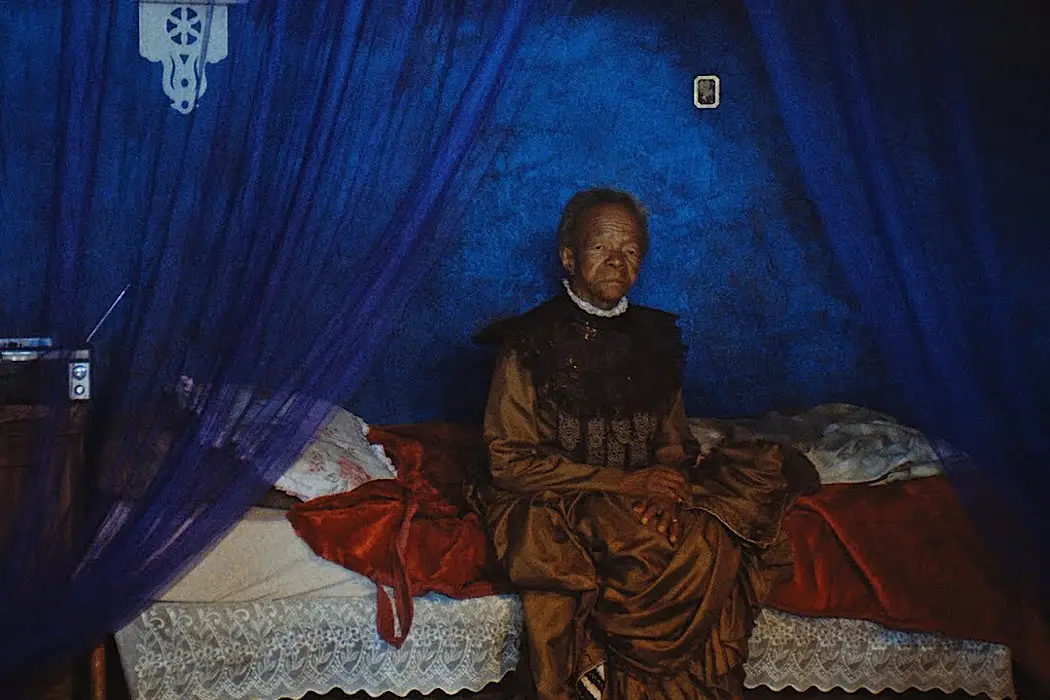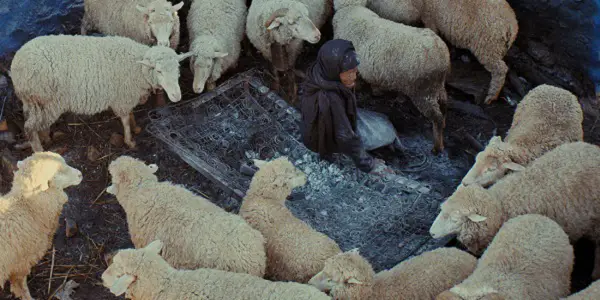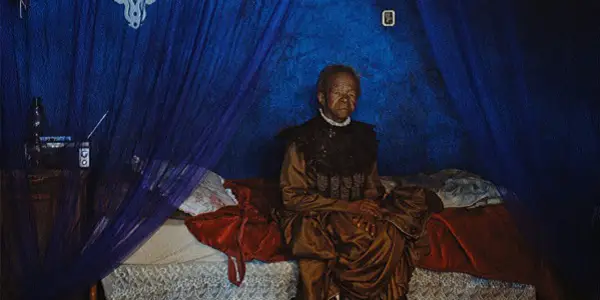THIS IS NOT A BURIAL, IT’S A RESURRECTION: A Landmark Film From Lesotho

Lee Jutton has directed short films starring a killer toaster,…
The winner of the Special Jury Prize for Visionary Filmmaking at the 2020 Sundance Film Festival and Lesotho’s first-ever submission for the Academy Award for Best International Feature Film, This is Not a Burial, It’s a Resurrection is a devastating depiction of one woman’s fight to maintain the traditions of her people when the crushing wave of modernization threatens to sweep them away. Written and directed by Mosotho filmmaker Lemohang Jeremiah Mosese and starring the late, great South African actor Mary Twala Mhlongo in her heartbreaking final performance, the film forces us to examine the idea of progress and the irreparable damage this purportedly positive force can do when it lacks a beating heart.
Life and Death
Elderly widow Mantoa (Mhlongo) is making the necessary arrangements for the impending end of her life when she receives earth-shattering news: her only son has died in a mining accident, leaving her entirely alone. Laying him and then herself to rest in their family’s longtime burial ground is the last remaining comfort Mantoa has to look forward to in her life, yet even that is ripped unceremoniously from her with the news that her entire village must be relocated in favor of a nearby dam. Water will flood everything Mantoa has ever known, including the burial ground.

Upon receiving this news, Mantoa becomes an unlikely figure of resistance in the village, encouraging others to join her in taking a stand and refusing to leave the land of their ancestors—all wide green plains and bright blue skies that seem as yet untouched by the modern world. Yet acts of violence and intimidation make it hard for these ordinary people to stand up to the powers that be. Hovering on the edge of this world and the next, Mantoa has a resilience of character that belies her fragile frame, and she’s willing to use every last one of her final days to withstand the wheels of what others call progress.
Light and Shadow
This is Not a Burial, It’s a Resurrection is a visually stunning film that uses rich color, light, and shadow in a masterful way; many frames in the film harken back to the great paintings of the Baroque era and the way those were designed to elicit an intense emotional response in the viewer. In one particularly evocative scene, Mantoa wakes up from a night sleeping in bed in her finest dress, a rich brown gown that looks striking against the ruby-red coverings and sapphire-blue curtains of her bed. A small, frail woman with a heavily creased face that conveys a lifetime of experience, gazes into the distance and contemplates yet another day of life on this planet, full of small joys and seemingly insurmountable struggles.

In this scene and so many others, Mantoa is depicted with the regality of a queen, which is nothing less than her character deserves. She is often shot from the back, clad all in black from her head wrap to her toes, her dignified silhouette centering the viewer’s eyes within the frame as activity occurs around her. Yet no amount of brilliant camerawork—and indeed, it is brilliant, courtesy of cinematographer Pierre de Villiers—could have succeeded in portraying Mantoa in such a powerful way without Mhlongo’s iconic performance. Her stubbornness provides a necessary shield for a broken heart that she knows cannot be healed in this life, and we know it too; we can see her anguish bubbling beneath the surface in everything she does, and driving her to keep going. Mhlongo is surrounded by a capable supporting cast, including Tseko Monaheng as the village chief who initially tries to dissuade Mantoa from her quest and Makhaola Ndebele as the priest who feels obligated to provide her with guidance, even if she will not listen. Together, they collectively provide a face for a group of people who are treated not as equals by the powers that be, but as objects that can be simply picked up and placed elsewhere without any thought for their needs and wants.
The film’s memorable visuals are matched by its soundtrack. Electronic composer Yu Miyashita, born in Japan but based in Berlin like Mosese, provides the film with a musical score that frequently dissolves into static and swells into shrill, harsh tones, a sonic interpretation of the unstoppable wave that is set to wash away everything Mantoa holds dear. In marked contrast to these aggressively modern sounds, This is Not a Burial, It’s a Resurrection contains scattered interludes featuring a storyteller played by Jerry Mofokeng Wa Makhetha, who narrates Mantoa’s tale and punctuates his words with the sounds of the traditional Sotho lesiba that he plays. His presence in the story gives it the feeling of a contemporary folktale, one with a moral that we would do well not to ignore.
Conclusion
This is Not a Burial, It’s a Resurrection is just more proof that the most exciting and impactful films being released today are coming out of Africa, from Mati Diop’s Atlantics to Philippe Lacôte’s Night of the Kings and beyond.
What do you think? Who are some of your favorite current African filmmakers? Share your thoughts in the comments below.
This is Not a Burial, It’s a Resurrection opens in virtual cinemas on April 2, 2021. You can find more international release dates here.
Does content like this matter to you?
Become a Member and support film journalism. Unlock access to all of Film Inquiry`s great articles. Join a community of like-minded readers who are passionate about cinema - get access to our private members Network, give back to independent filmmakers, and more.
Lee Jutton has directed short films starring a killer toaster, a killer Christmas tree, and a not-killer leopard. Her writing has appeared in publications such as Film School Rejects, Bitch: A Feminist Response to Pop Culture, Bitch Flicks, TV Fanatic, and Just Press Play. When not watching, making, or writing about films, she can usually be found on Twitter obsessing over soccer, BTS, and her cat.













